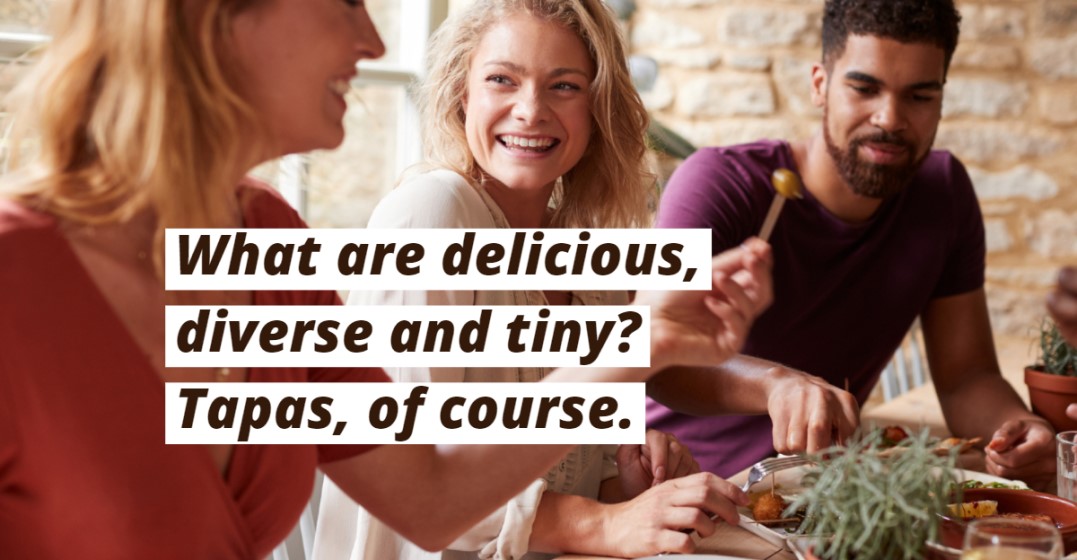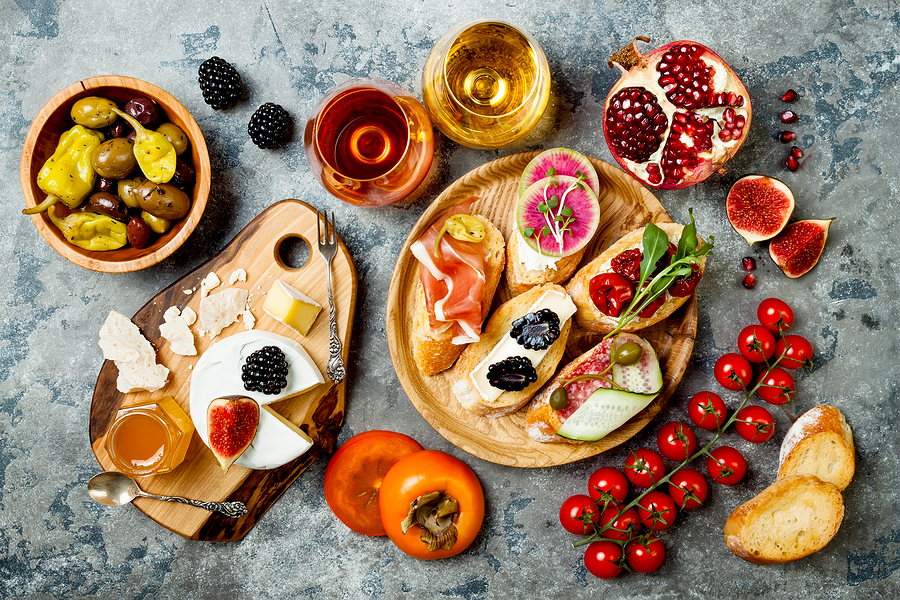Spanish Tapas: Explained

Delicious, diverse and...tiny.
There’s no denying that tapas have taken over the world. Wherever you go, you may find Greek tapas, Japanese tapas, Thai tapas or Mexican tapas. But today, we talk about the original ones. Oh yes...we’re talking about the exciting lands of paso doble, Picasso and Casa de Papel. The one that never fails to make our hearts beat faster.
Stay put as we walk you through the incredible world of Spanish tapas and their origins. One thing is for sure... your culinary experience will never be the same again!
¡Buen provecho!

What are tapas and what makes them tapas?
Some people get confused about tapas because they assume they’re a type of food. Actually, they are not about the ingredients as much as they are about the size. In the end, regardless of what is actually served, tapas are small portions of food served in small dishes, which are sometimes made of clay. In Spain, they are also expected to accompany some type of alcoholic drink, such as red wine or sangría!Examples of tapas you just can’t miss
If tapas are small portions of food, it isn’t hard to see why they could be almost anything depending on where you go. Different regions of Spain will have different ways of serving them and eating them, not to mention ingredients also vary a lot. Here are some examples of tapas you need to try if you’d like to get closer to Spanish cuisine:-
- Aceitunas. Usually green olives served with a red bell pepper filling and plenty of olive oil and herbs.
- Calamares. Squid rings, which are often fried.
- Croquetas. Fried rolls made mostly of ground meat, popular in cafés and restaurants but also birthday parties!
- Patatas bravas. Spanish fried potatoes in cubes with a spicy sauce on top.
- Tortilla de patatas or tortilla española. A Spanish version of omelet that is incredibly popular nationwide both in restaurants and at home. Made with potato, onions and eggs!
- Ensaladilla rusa. A traditional Russian dish originally called Olivier salad, it is made of boiled veggies, tuna and lots of mayonnaise.
- Pimientos de Padrón. Small green peppers from Galicia typically seasoned with sea salt, they are famous for being quite unpredictable in terms of spiciness. Some are spicy, some aren’t. Do you feel lucky?
- Pulpo a la gallega. Boiled octopus often served with olive oil, paprika, garlic and/or herbs.
- Montado or montadito. A small slice of baguette with toppings - olive oil, salmon, cheese, cured meats and tomato are common options. It is thought that the tradition of the montadito dates back to the 15th century.
- All types of cheese and cured meats. Chorizo, jamón (cured Spanish ham), lomo (cured pork tenderloin), tapas with several types of fried cheese, morcilla with goat cheese...options are endless!

Are tapas the same as appetizers?
Not exactly. Tapas have quite a flexible role in Spanish culture and vary according to region and personal routine. While some see it as a snack before a late lunch or dinner - and Spaniards are famous for eating late in comparison to the rest of Europe - others see them as appetizers, and many more see them as a whole meal in their own right. After all, it’s perfectly possible to be full with a combination of five or six tapas!What happens in a tapas bar or restaurant?
Visit Spain and you’ll realize tapas are everywhere - cafés, bars and restaurants - and are served from morning to night. In the vast majority of the country you are expected to pay for tapas as for any other dish. Most menus either have an entire section for tapas or offer tapa-sized versions of dishes. Make sure you pay attention to prices, as tapas can either be very cheap or extremely expensive depending on the ingredients included. Good news - in older, traditional restaurants in Madrid and Granada, you might get free tapas included with your drink!Spanish words and expressions related to tapas
If you thought food and language were completely unrelated, think again - the habit of eating tapas is so deeply ingrained in Spanish culture that there are several expressions related to the tradition! Here are some useful ones:- tapear: the verb “to have tapas”, whether alone or in groups. It can be used both at home or in restaurants. It is also important to notice that tapas eating is quite a dynamic activity: usually it implies going from bar to bar. (Example: Donde se puede tapear en Granada? - Where can one have tapas in Granada?)
- ir de tapas: literally “to go in tapas”, it means “to go out for tapas” (Ir de tapas es un auténtico rito en España - to go out for tapas is an authentic ritual in Spain).
- el tapeo: the noun for eating tapas (Example: En este restaurante se encuentra el verdadero tapeo mediterráneo - In this restaurant we can find the true Mediterranean ‘tapas eating’).
- picar: the verb for when people sit around the table getting a little bite of several different tapas here and there.













